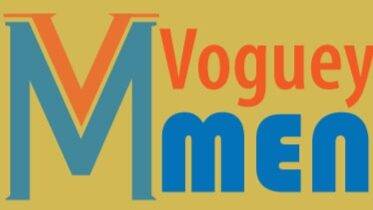Spain—the land of sparkling sunshine, spotless beaches, marauding matadors, and fascinating festivals—is more than just a dream destination. It’s also one of Europe’s fashion powerhouses, brimming with bold style and rich heritage. Today, we’re diving into Spain’s traditional fashion, iconic garments, statement accessories, and dazzling jewelry—the pieces that make Spanish style unforgettable. Just like the country itself, Spanish fashion is just as captivating. The Spanish take style seriously, and it’s woven into the very fabric of their culture. Whether it’s the flamenco dress that exudes passion or the intricate lace mantilla worn with elegance, every piece tells a story. We are here dive deep into Spain’s fashion legacy, must-know garments, and stylish accessories that define Spanish elegance. Alright, let’s get our spanish fashion party started!
Spain’s iconic garments and sartorial pieces:
Spain’s fashion is modern, people value it as a vital part of good life. We’ll talk about Spain’s most iconic garments that more or less represent Spain, and it’s not limited to the world famous flamenco dress, there’s more to the story!.
1. The Flamenco dress (Traje de Flamenca)
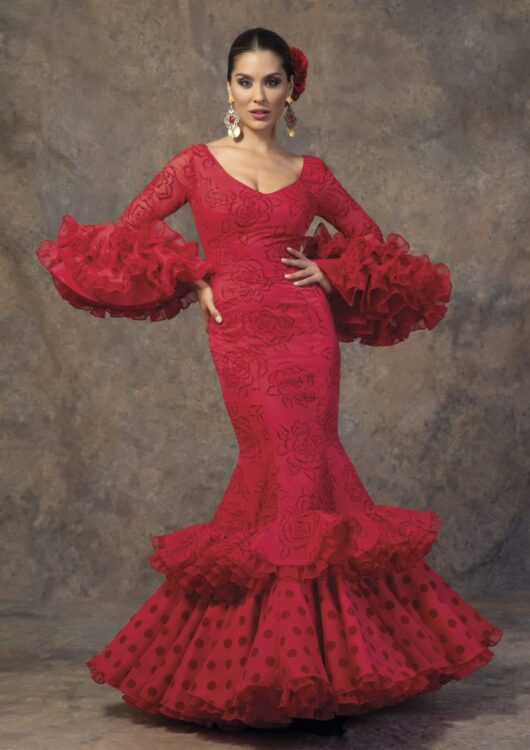
A form-fitting dress with a flared, ruffled skirt and sleeves, traditionally worn by women at Andalusian fairs and flamenco performances. Made of cotton or silk, it features vibrant colors and polka dot or floral patterns. The dress enhances movement during dancing and is accessorized with a shawl, combs, and large earrings. Modern versions vary in length and embellishments but retain the signature silhouette that represents Spanish passion and elegance.
2. Spanish short suit (Traje Corto)

A traditional Andalusian outfit for men, consisting of a short, fitted jacket (chaquetilla), high-waisted trousers, and a wide-brimmed hat (cordobés). Made from wool or cotton, it is worn at ferias, equestrian events, and flamenco performances. The jacket is often richly embroidered and paired with a crisp white shirt. The traje corto symbolizes Spanish horsemanship and has influenced modern equestrian fashion worldwide, blending sophistication with rustic charm.
Spain’s Fashion.
3. Bolero Jacket

A short, cropped jacket with no buttons, originating from Spain. Traditionally made of wool, velvet, or brocade, it is heavily embroidered and can be worn by both men and women. The bolero is often paired with high-waisted skirts or trousers, adding structure and elegance to an outfit. Historically, it was part of Spanish bullfighters’ and dancers’ attire, and today, it is used in flamenco performances and haute couture fashion. image source
4. Fallera Dress
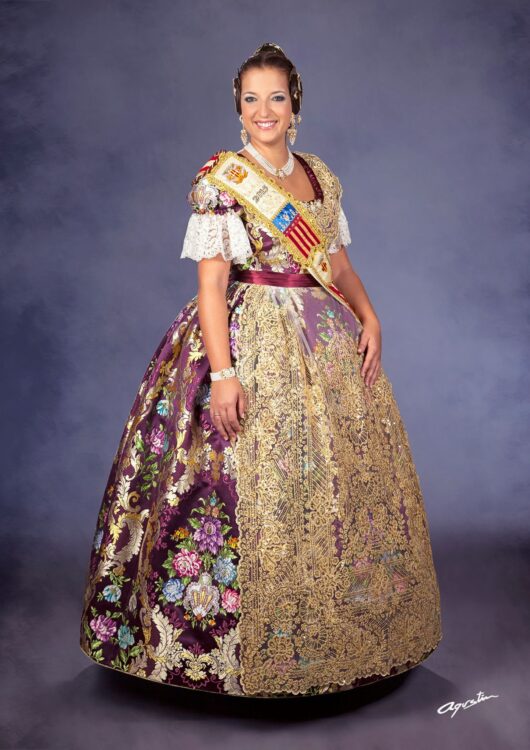
A luxurious, full-skirted gown worn by Valencian women during the Las Fallas festival. Made of rich silk with elaborate floral embroidery and lace, it features a fitted bodice, puffed sleeves, and an ornate sash. The ensemble includes an intricate hairstyle adorned with golden combs (peinetas). Inspired by 18th-century Spanish noble fashion, the fallera dress is a symbol of cultural heritage, craftsmanship, and celebration in Valencia, requiring skilled artisans for its elaborate production.
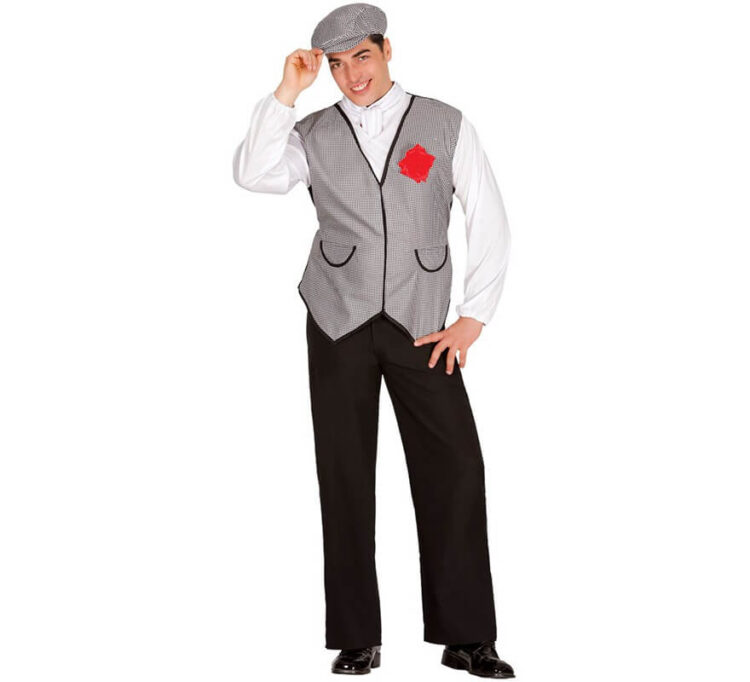
5. The Chulapa suit (Traje Chulapa)
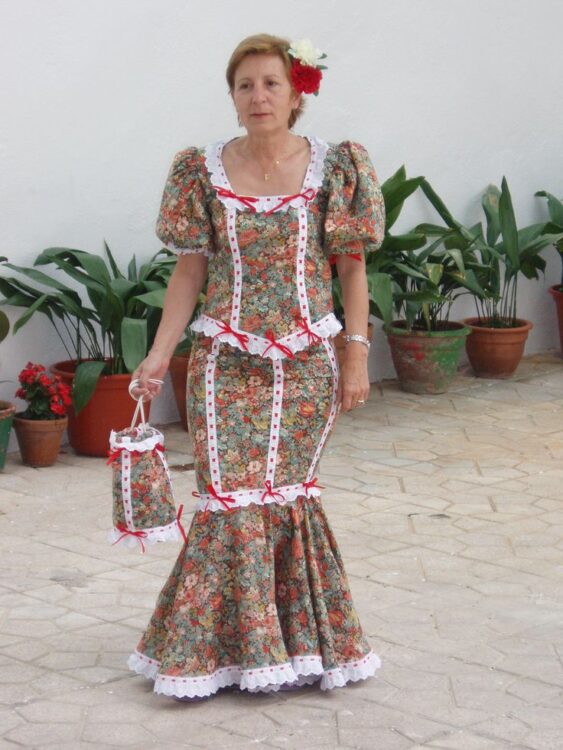
A traditional Madrid dress worn by women during the San Isidro festival. It is a fitted, ankle-length gown with a mermaid silhouette, polka dots, and lace detailing. Made of cotton or satin, it is worn with a fringed shawl, a white headscarf, and a decorative flower. The traje chulapa reflects Madrid’s folk culture and is often worn alongside the male equivalent, the traje chulapo, which consists of a vest, flat cap, and fitted trousers.
Spain’s Fashion
6. Traje de Luces (Suit of Lights)
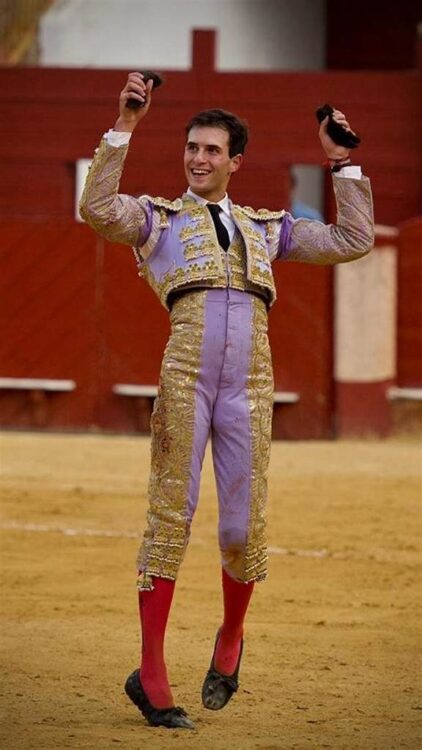
The extravagant, heavily embroidered suit worn by matadors in Spanish bullfighting. Made of silk, gold, and silver thread, it features tight-fitting trousers, a short jacket, and elaborate embroidery symbolizing nobility and bravery. Designed for mobility and grandeur, the traje de luces is one of the most iconic Spanish garments. Its dazzling appearance, inspired by 18th-century fashion, has influenced theatrical costumes and high-fashion collections worldwide.
7. Baserritarra Costume
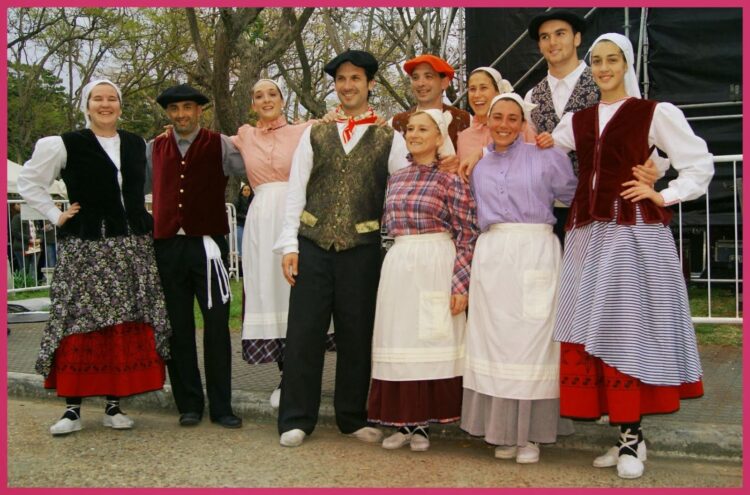
The traditional rural Basque outfit, worn by both men and women in festivals and historical reenactments. Women wear a long, pleated skirt, a white blouse, a lace-up bodice, and a shawl, while men wear a loose white shirt, dark trousers, a vest, and a beret (txapela). Made from wool or cotton, the costume reflects Basque heritage and is commonly seen during celebrations such as Santo Tomás fairs and regional dance performances.
8. Campero Suit
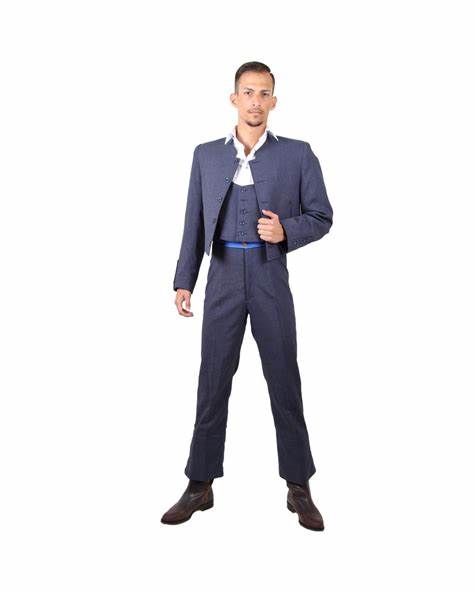
A rustic yet elegant Andalusian outfit worn by men, mainly for horseback riding and country fairs. It consists of a short, fitted jacket, high-waisted trousers, a wide-brimmed hat, and leather boots. Made from sturdy wool or cotton, it is designed for durability and comfort. The campero suit is associated with Spanish rural life and equestrian culture, and its structured design has influenced Western-style cowboy attire. Women also wear a similar version for equestrian events.
10. Balloon skirt:
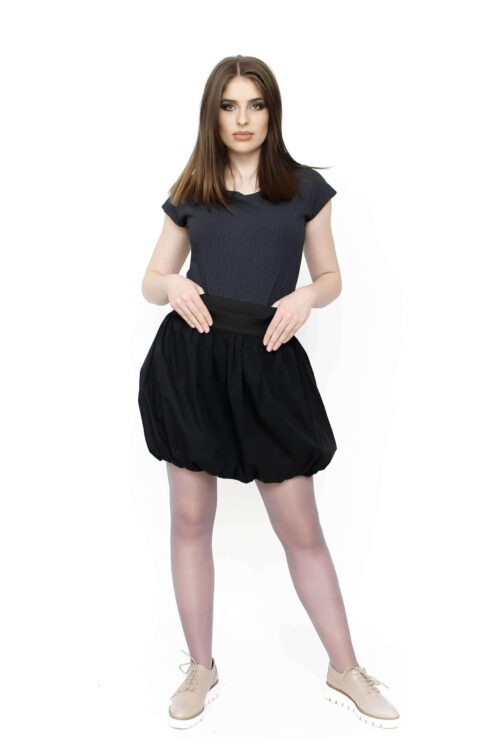
The balloon skirt originated in Spain, introduced by Cristóbal Balenciaga in 1951 as a revolutionary cocktail dress. Inspired by Spanish heritage and traditional silhouettes, Balenciaga’s design featured a voluminous, puffed-out shape that framed the figure. It gained popularity in the mid-20th century, with designers like Christian Dior further popularizing exaggerated forms. Over time, the balloon skirt evolved into both high-fashion and casual styles, recently resurging in contemporary collections, blending historical elegance with modern versatility.
Spanish fashion has a lot in common with Mexico and some other Latin American countries, you can find out more about Mexican fashion here,
Spanish fashion accessories and footwear:
1. Mantilla and Peineta
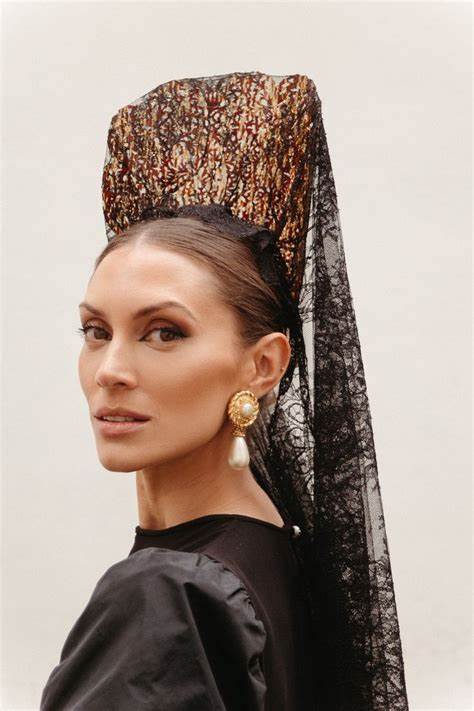
The mantilla is a delicate lace or silk veil worn over the head and shoulders, often draped over a tall, decorative comb called the peineta. Traditionally worn by women during religious ceremonies, bullfights, and special occasions, it symbolizes Spanish elegance. The mantilla adds height and grace, while the peineta secures it in place, creating a regal and sophisticated look.
Spain’s Fashion
2. Espadrilles (Alpargatas)
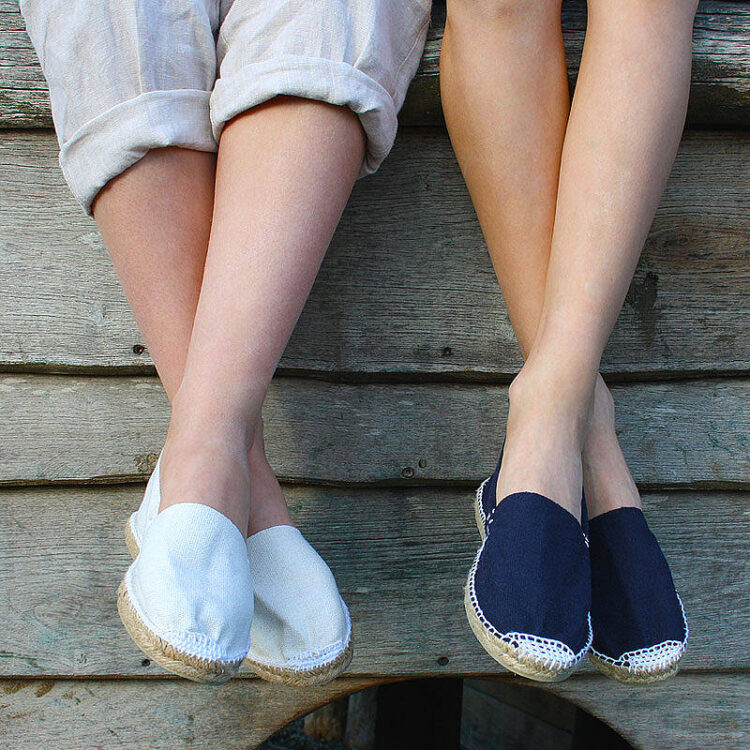
Traditional Spanish footwear with a canvas or cotton upper and a rope-soled base, often made of jute or esparto grass. Originally worn by peasants, espadrilles are now a stylish, unisex summer shoe. They can have flat or wedge soles, with some featuring ankle ties. Comfortable and breathable, they are popular worldwide, particularly in Mediterranean fashion, blending rustic charm with modern versatility.
3. Abanico (Hand Fan)

A folding hand fan made of wood, fabric, or lace, used for cooling, communication, and elegance. Traditionally carried by Spanish women, the abanico is an essential accessory at flamenco performances and social gatherings. It comes in various sizes and colors, often adorned with intricate patterns. Beyond its practical use, the abanico remains a symbol of grace, flirtation, and Spanish heritage.
4. Cordovan or Wide-Brim Hat
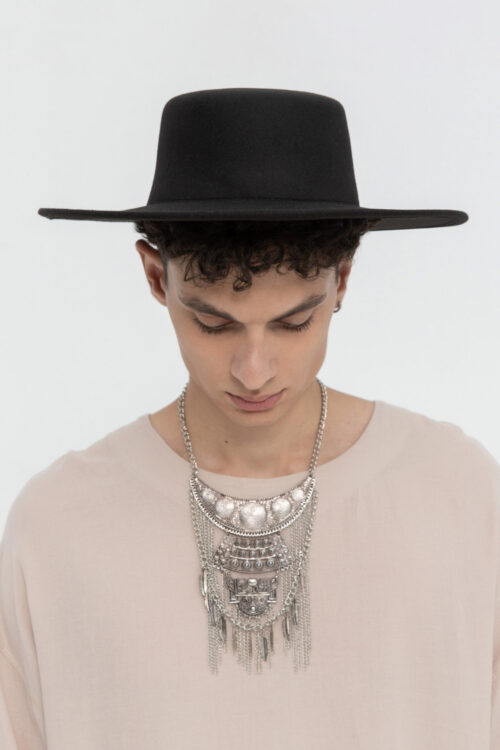
The Cordovan hat, also known as the Andalusian or wide-brim hat, is a structured, stiff-brimmed hat made of felt or straw. Traditionally worn by men for horseback riding, ferias, and bullfighting, it features a flat crown and a straight, wide brim. Women sometimes wear it with flamenco attire. Its bold shape and elegance have influenced hat designs in Spanish and Latin American culture.
5. Manton de Manila (Manila Shawl)
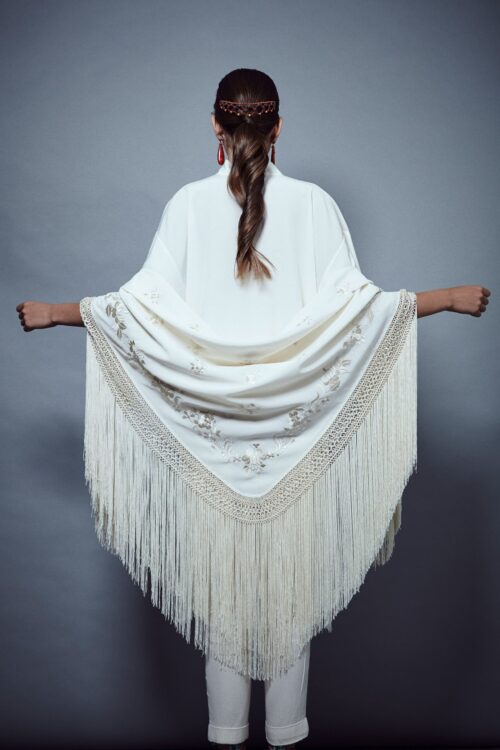
A richly embroidered silk shawl with long, decorative fringes, originally imported from the Philippines through Spanish trade routes. Worn by Spanish women over the shoulders or draped as a fashion statement, it features intricate floral and bird motifs. Commonly paired with flamenco dresses or elegant evening wear, the mantón de Manila is a symbol of Spanish refinement and cultural fusion.
6. Montera (Bullfighter’s Hat)
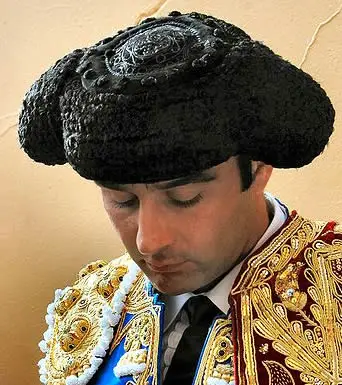
A traditional, black, curved hat worn by matadors and bullfighters. Made of astrakhan fur or velvet, the montera has a distinctive rounded shape with two side protrusions. It replaced earlier three-cornered hats in the 19th century. The montera is an essential part of the traje de luces (suit of lights), adding to the dramatic and ceremonial nature of Spanish bullfighting attire. image source
Gift-worthy jewels and gems from Spain:
1. Arracadas:

Large, crescent-shaped hoop earrings with intricate gold or silver designs, originally influenced by Moorish and indigenous styles. Popular in Spain and Latin America, they symbolize wealth and heritage. Worn by women, especially in Andalusian and flamenco fashion, arracadas add a bold, elegant touch to traditional outfits.
2. Lauburu Basque Cross Necklace or Pendant.

A distinctive four-armed swirling cross, symbolizing the Basque heritage, unity, and spirituality. Made of silver, gold, or wood, it is worn as a necklace or pendant by both men and women. Historically used as a protective amulet, the lauburu remains an important cultural emblem in Basque jewelry.
3. Caravaca Necklace:
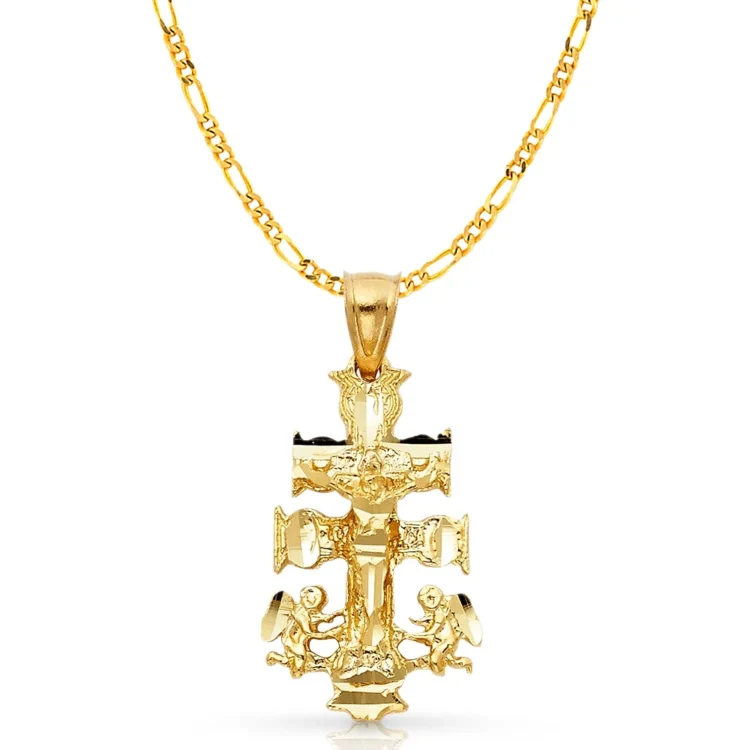
A religious pendant featuring the double-armed Caravaca Cross, linked to miracles and protection in Spanish Catholic tradition. Made of gold or silver, it is often worn on a chain or rosary by devout individuals. The cross originates from the city of Caravaca de la Cruz, making it a sacred symbol in Spain.
4. Flamenco Earrings:
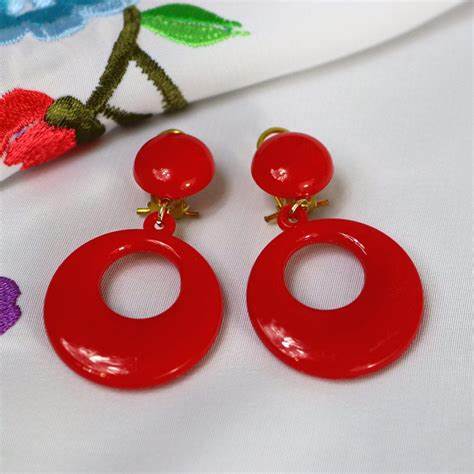
Large, ornate earrings, often hoops or dangling designs, worn by women with flamenco dresses. Made of gold, silver, or colorful materials like enamel, they enhance movement and femininity. Flamenco earrings are essential accessories in Spanish dance and festivals, adding vibrancy and elegance.
Spain’s Fashion
5. Majorica Pearls:
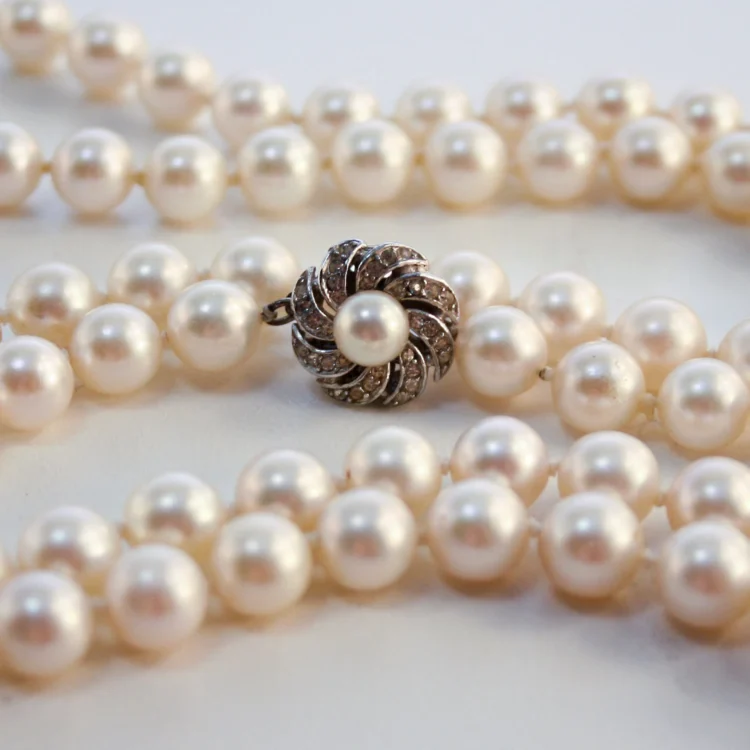
High-quality imitation pearls handcrafted in Spain’s Balearic Islands. Made using a unique organic coating technique, they closely resemble natural pearls in luster and durability. Majorica pearls are used in necklaces, earrings, and bracelets, offering a luxurious yet affordable alternative to real pearls.
